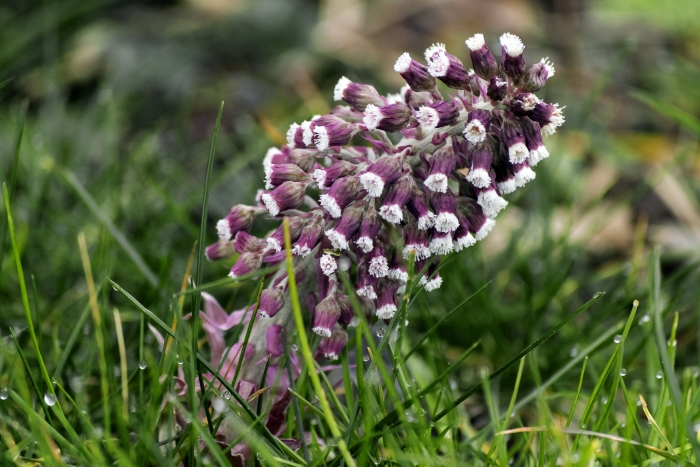Butterbur
(Petasites hybridus)
Butterbur (Petasites hybridus)
/
/

Paul van de Velde
CC BY 2.0
Image By:
Paul van de Velde
Recorded By:
Copyright:
CC BY 2.0
Copyright Notice:
Photo by: Paul van de Velde | License Type: CC BY 2.0 | License URL: https://creativecommons.org/licenses/by/2.0/ | Uploader: PiùChéBella | Publisher: Flickr |





















































Estimated Native Range
Summary
Petasites hybridus, commonly known as Butterbur, is a deciduous perennial herb that thrives in a variety of habitats including riverbanks, damp forests, and wet meadows in Europe, the Caucasus, and Turkey. It can reach a height of 3 feet and spread aggressively to cover an area up to 9 feet wide. The plant is characterized by its large, heart-shaped leaves and clusters of pink or purple flowers that appear before the leaves in early spring. The flowers are not particularly showy, but they do provide early-season interest in the garden.
Butterbur is valued for its bold foliage which can create a dramatic ground cover in moist, shady areas. It is often used in naturalistic plantings and to stabilize soil in riparian zones. In cultivation, Butterbur prefers consistently moist soil and can tolerate a range of conditions from full sun to partial shade. However, gardeners should be cautious as it can become invasive, especially in regions with similar climates to its native habitat. It is also known to have medicinal properties, historically used for treating migraines and asthma, though it contains pyrrolizidine alkaloids which can be toxic if ingested in large quantities.CC BY-SA 4.0
Butterbur is valued for its bold foliage which can create a dramatic ground cover in moist, shady areas. It is often used in naturalistic plantings and to stabilize soil in riparian zones. In cultivation, Butterbur prefers consistently moist soil and can tolerate a range of conditions from full sun to partial shade. However, gardeners should be cautious as it can become invasive, especially in regions with similar climates to its native habitat. It is also known to have medicinal properties, historically used for treating migraines and asthma, though it contains pyrrolizidine alkaloids which can be toxic if ingested in large quantities.CC BY-SA 4.0
Plant Description
- Plant Type: Herb
- Height: 2-6 feet
- Width: 3-9 feet
- Growth Rate: Rapid
- Flower Color: Pink, Purple
- Flowering Season: Spring
- Leaf Retention: Deciduous
Growth Requirements
- Sun: Part Shade, Full Sun
- Water: Medium, High
- Drainage: Slow, Medium
Common Uses
Low Maintenance, Water Garden
Natural Habitat
Native to riverbanks, damp forests, and wet meadows in Europe, the Caucasus, and Turkey
Other Names
Common Names: Pestilence Wort, Gewöhnliche Pestwurz, Rote Pestwurz, Pétasite Officinal, Groot Hoefblad
Scientific Names: , Petasites hybridus, Petasites officinalis var. hybridus, Petasites major, Petasites reuterianus, Petasites hybridus subsp. georgicus, Petasites officinalis f. reuterianus, Petasites officinalis subsp. foemina, Petasites ovalis,
GBIF Accepted Name: Petasites hybridus (L.) G.Gaertn., B.Mey. & Scherb.